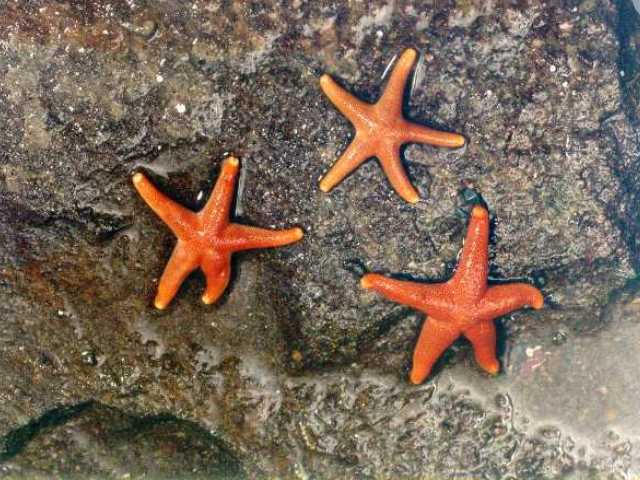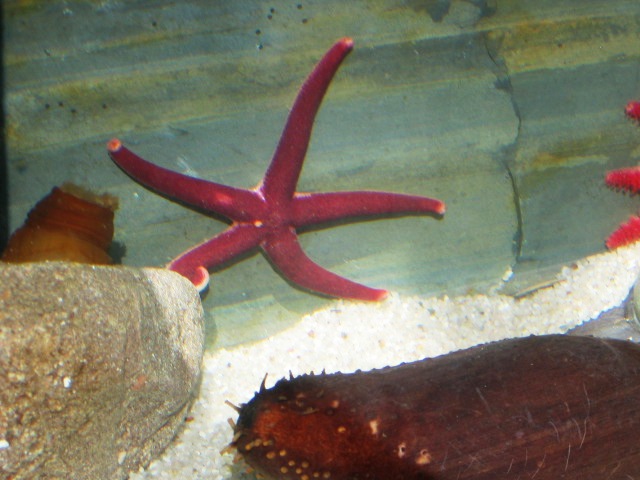Blood star

Scientific name: Henricia spp.
Phylum: Echinodermata
Class: Asteroidea
Description: Blood stars are brightly colored, usually red or orange, sometimes yellowish to purple. They have 5 arms and with 2 rows of tube feet on each. These sea stars are usually 6cm or less and have a fine granular covering of small equal sized spines.
Distribution: They are found sub-tidal southward in cold deep water about 15ft. or more. In some areas they are in the lower inter-tidal zone and at scuba diving depth.
Locomotion: They use “tube feet” which are connected to ampullae to move. When ampullae contract, fluid is forced into the tube feet, extending them; small muscles direct the tube feet in one direction or another. Sea stars migrate to deeper water in winter.
Food gathering: Blood stars are suspension feeders using mucus coverd tube feet to extract food particles.
Gas exchange: Gas exchange occurs across the podia and special out-pocketing of body wall. The currents move in opposite directions, creating a countercurrent and maximizing exchanges gradients.
Reproduction: The sexes are separated, with eggs being fertilized externally. Females brood their eggs and there is no free swimming larval stage.
Images
 |
 |
OSC Research
Mercier Lab - Research on reproduction, larval development, ecology and growth is carried out on a wide variety of marine invertebrates in this lab.